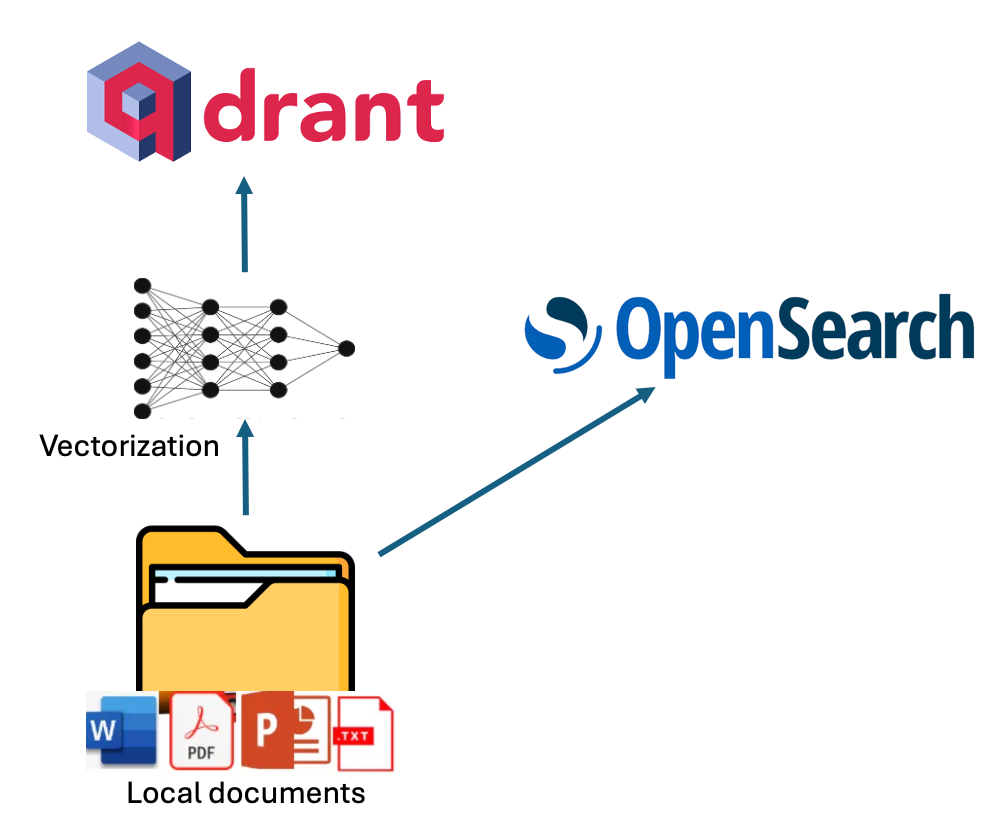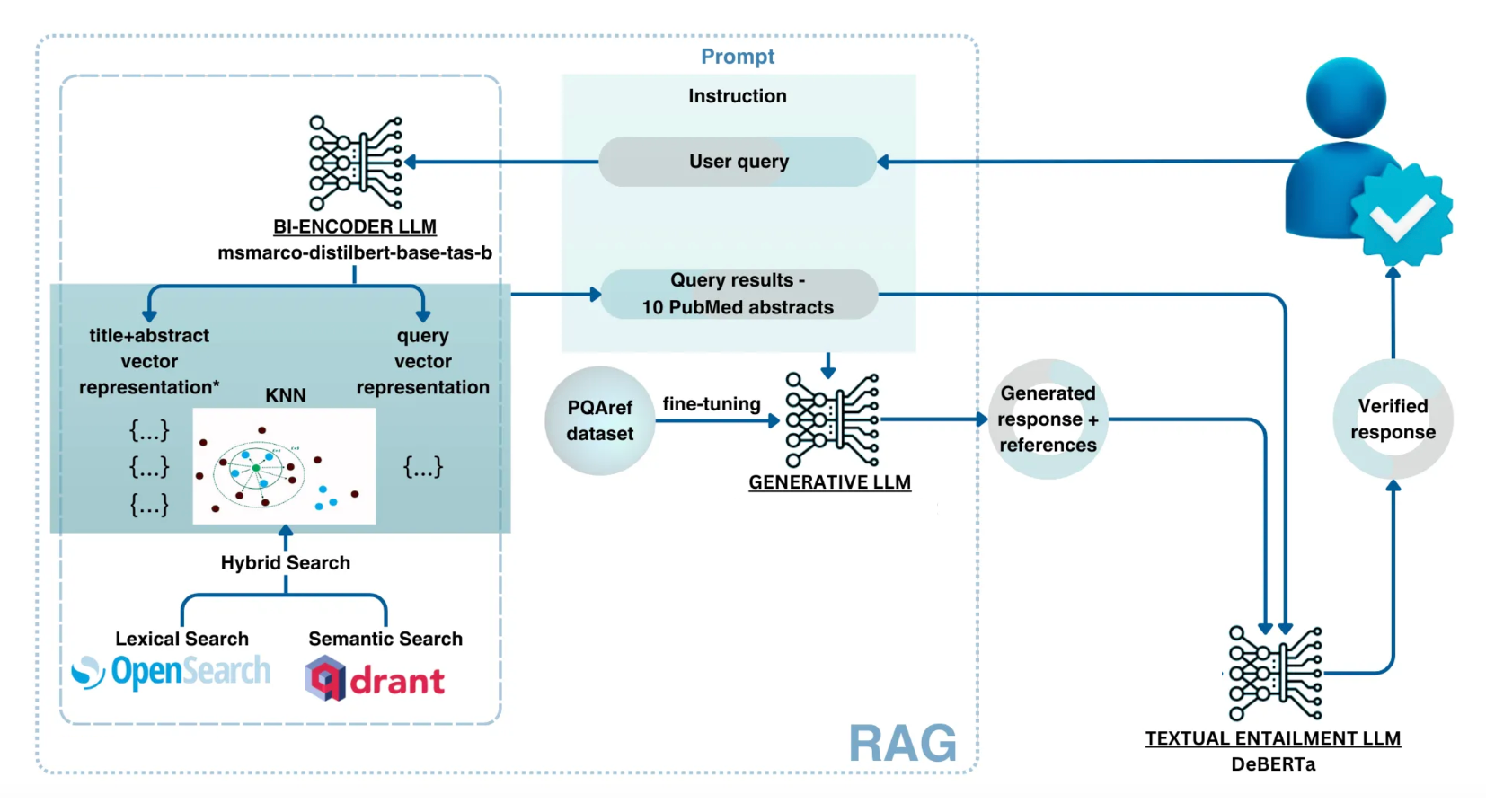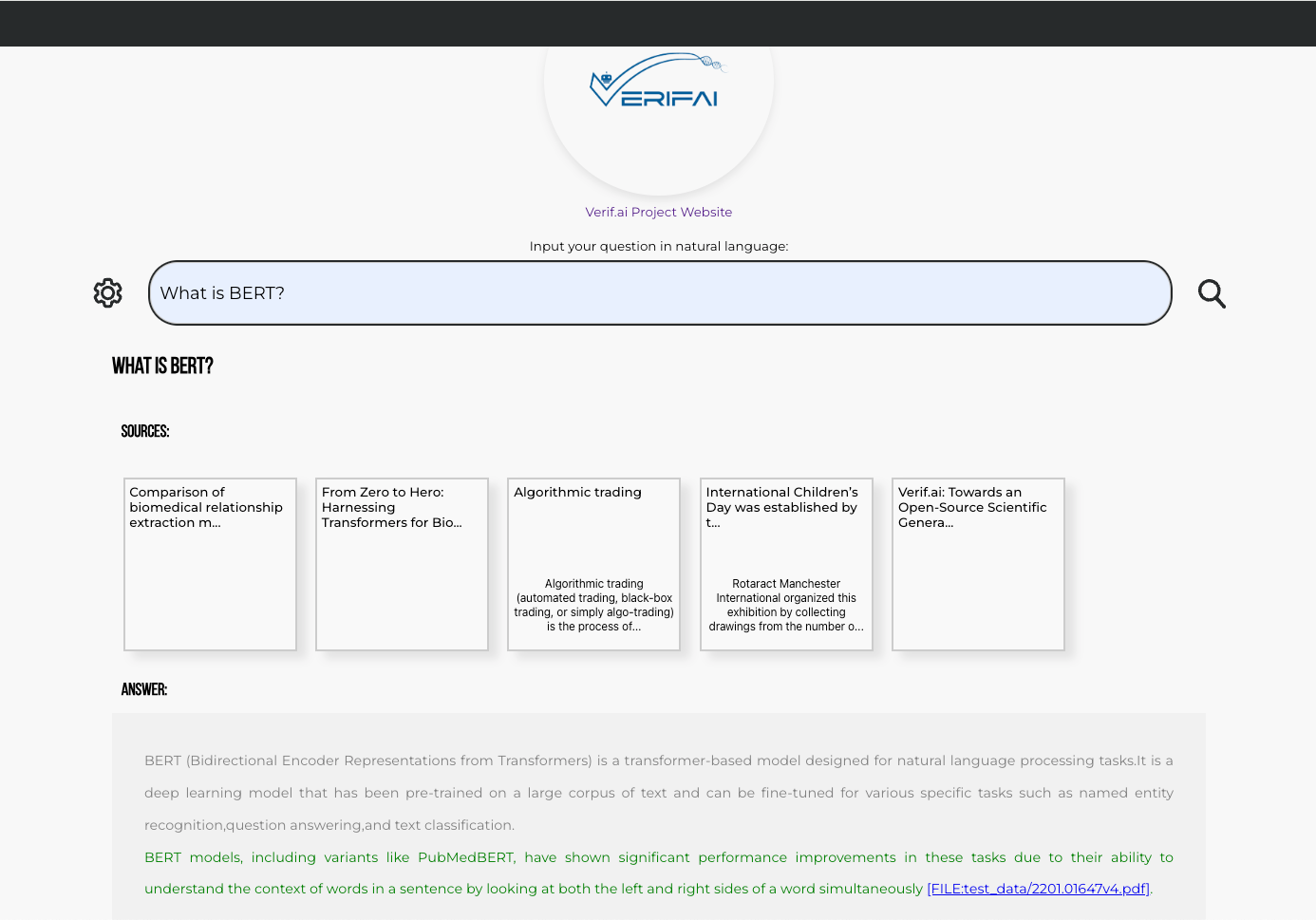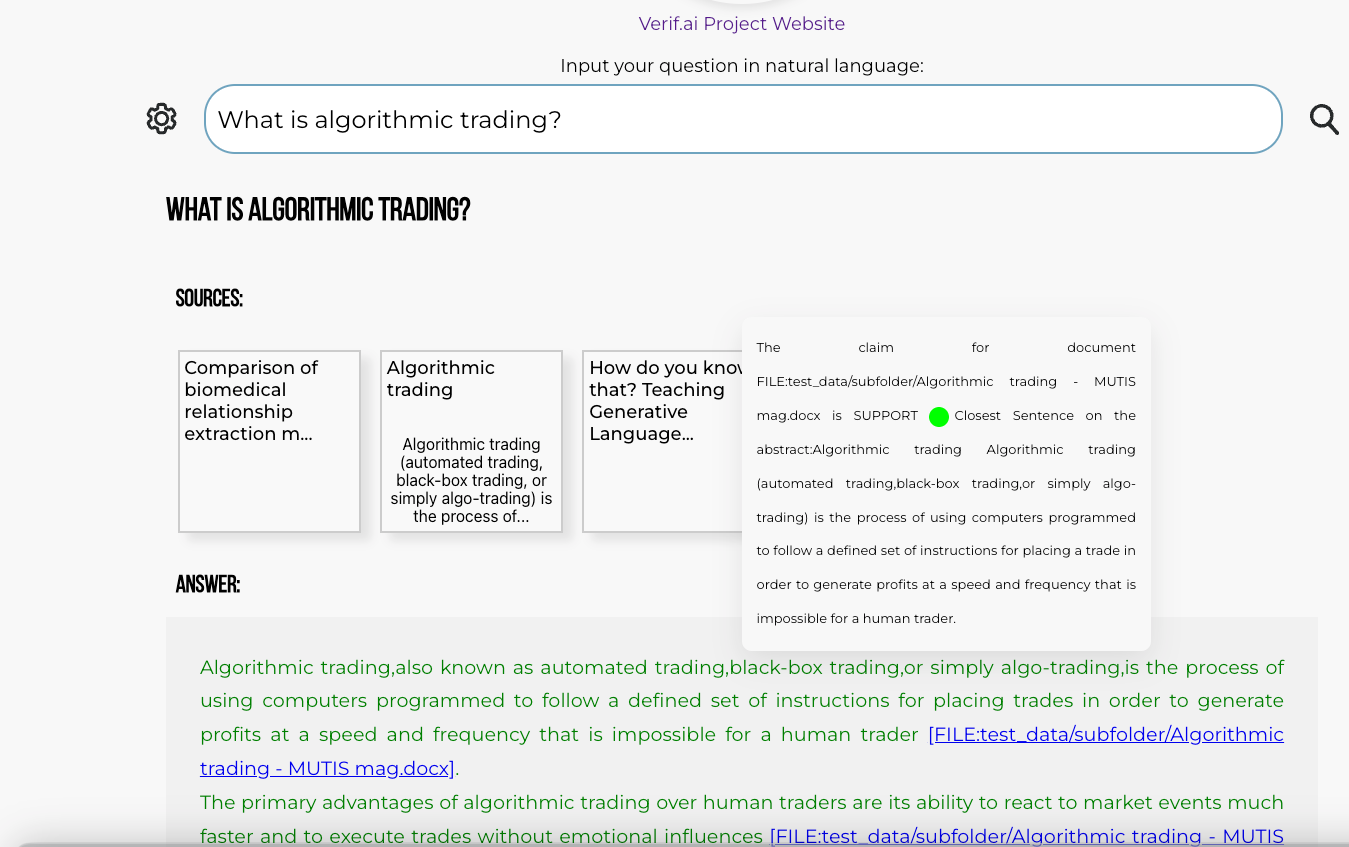How to Easily Deploy a Local Generative Search Engine Using VerifAI
This article details a significant update to the VerifAI project, an open-source generative search engine. Previously focused on biomedical data (VerifAI BioMed, accessible at https://www.php.cn/link/ae8e20f2c7accb995afbe0f507856c17), VerifAI now offers a core functionality (VerifAI Core) allowing users to create their own generative search engine from local files. This empowers individuals, organizations, and enterprises to build custom search solutions.
Key Features and Architecture:
VerifAI Core's architecture comprises three main components:
- Indexing: Utilizes OpenSearch for lexical indexing and Qdrant for semantic indexing (using Hugging Face embedding models). This dual approach ensures comprehensive document representation. The indexing script supports various file types (PDF, Word, PowerPoint, Text, Markdown).

-
Retrieval-Augmented Generation (RAG): Combines results from OpenSearch's lexical search and Qdrant's semantic search (using dot product similarity). The merged results inform a prompt for the chosen large language model (LLM). The default LLM is a locally deployed, fine-tuned version of Mistral, but users can specify others (OpenAI API, Azure API, etc., via vLLM, OLlama, or Nvidia NIMs).
-
Verification Engine: A crucial component that checks the generated answer against the source documents, minimizing hallucinations.

Setup and Installation:
-
Clone the Repository:
git clone https://github.com/nikolamilosevic86/verifAI.git -
Create a Python Environment:
python -m venv verifai; source verifai/bin/activate -
Install Dependencies:
pip install -r verifAI/backend/requirements.txt -
Configure VerifAI: Configure the
.envfile (based on.env.local.example) specifying database credentials (PostgreSQL), OpenSearch, Qdrant, LLM details (path, API key, deployment name), embedding model, and index names. -
Install Datastores:
python install_datastores.py(requires Docker). -
Index Files:
python index_files.py <path-to-directory-with-files></path-to-directory-with-files>(e.g.,python index_files.py test_data). -
Run the Backend:
python main.py -
Run the Frontend: Navigate to
client-gui/verifai-ui, runnpm install, thennpm start.


Contribution and Future Development:
VerifAI is an open-source project welcoming contributions. The project was initially funded by the Next Generation Internet Search project (European Union) and developed in collaboration with the Institute for Artificial Intelligence Research and Development of Serbia and Bayer A.G. Further development is ongoing, with a focus on expanding its capabilities and usability. Contributions are encouraged via pull requests, bug reports, and feature requests. Visit https://www.php.cn/link/d16c19f1f2ab8361fda1f625ce3ff26a for more information.
The above is the detailed content of How to Easily Deploy a Local Generative Search Engine Using VerifAI. For more information, please follow other related articles on the PHP Chinese website!

Hot AI Tools

Undresser.AI Undress
AI-powered app for creating realistic nude photos

AI Clothes Remover
Online AI tool for removing clothes from photos.

Undress AI Tool
Undress images for free

Clothoff.io
AI clothes remover

Video Face Swap
Swap faces in any video effortlessly with our completely free AI face swap tool!

Hot Article

Hot Tools

Notepad++7.3.1
Easy-to-use and free code editor

SublimeText3 Chinese version
Chinese version, very easy to use

Zend Studio 13.0.1
Powerful PHP integrated development environment

Dreamweaver CS6
Visual web development tools

SublimeText3 Mac version
God-level code editing software (SublimeText3)

Hot Topics
 Best AI Art Generators (Free & Paid) for Creative Projects
Apr 02, 2025 pm 06:10 PM
Best AI Art Generators (Free & Paid) for Creative Projects
Apr 02, 2025 pm 06:10 PM
The article reviews top AI art generators, discussing their features, suitability for creative projects, and value. It highlights Midjourney as the best value for professionals and recommends DALL-E 2 for high-quality, customizable art.
 Getting Started With Meta Llama 3.2 - Analytics Vidhya
Apr 11, 2025 pm 12:04 PM
Getting Started With Meta Llama 3.2 - Analytics Vidhya
Apr 11, 2025 pm 12:04 PM
Meta's Llama 3.2: A Leap Forward in Multimodal and Mobile AI Meta recently unveiled Llama 3.2, a significant advancement in AI featuring powerful vision capabilities and lightweight text models optimized for mobile devices. Building on the success o
 Best AI Chatbots Compared (ChatGPT, Gemini, Claude & More)
Apr 02, 2025 pm 06:09 PM
Best AI Chatbots Compared (ChatGPT, Gemini, Claude & More)
Apr 02, 2025 pm 06:09 PM
The article compares top AI chatbots like ChatGPT, Gemini, and Claude, focusing on their unique features, customization options, and performance in natural language processing and reliability.
 Is ChatGPT 4 O available?
Mar 28, 2025 pm 05:29 PM
Is ChatGPT 4 O available?
Mar 28, 2025 pm 05:29 PM
ChatGPT 4 is currently available and widely used, demonstrating significant improvements in understanding context and generating coherent responses compared to its predecessors like ChatGPT 3.5. Future developments may include more personalized interactions and real-time data processing capabilities, further enhancing its potential for various applications.
 Top AI Writing Assistants to Boost Your Content Creation
Apr 02, 2025 pm 06:11 PM
Top AI Writing Assistants to Boost Your Content Creation
Apr 02, 2025 pm 06:11 PM
The article discusses top AI writing assistants like Grammarly, Jasper, Copy.ai, Writesonic, and Rytr, focusing on their unique features for content creation. It argues that Jasper excels in SEO optimization, while AI tools help maintain tone consist
 Top 7 Agentic RAG System to Build AI Agents
Mar 31, 2025 pm 04:25 PM
Top 7 Agentic RAG System to Build AI Agents
Mar 31, 2025 pm 04:25 PM
2024 witnessed a shift from simply using LLMs for content generation to understanding their inner workings. This exploration led to the discovery of AI Agents – autonomous systems handling tasks and decisions with minimal human intervention. Buildin
 Choosing the Best AI Voice Generator: Top Options Reviewed
Apr 02, 2025 pm 06:12 PM
Choosing the Best AI Voice Generator: Top Options Reviewed
Apr 02, 2025 pm 06:12 PM
The article reviews top AI voice generators like Google Cloud, Amazon Polly, Microsoft Azure, IBM Watson, and Descript, focusing on their features, voice quality, and suitability for different needs.
 AV Bytes: Meta's Llama 3.2, Google's Gemini 1.5, and More
Apr 11, 2025 pm 12:01 PM
AV Bytes: Meta's Llama 3.2, Google's Gemini 1.5, and More
Apr 11, 2025 pm 12:01 PM
This week's AI landscape: A whirlwind of advancements, ethical considerations, and regulatory debates. Major players like OpenAI, Google, Meta, and Microsoft have unleashed a torrent of updates, from groundbreaking new models to crucial shifts in le






